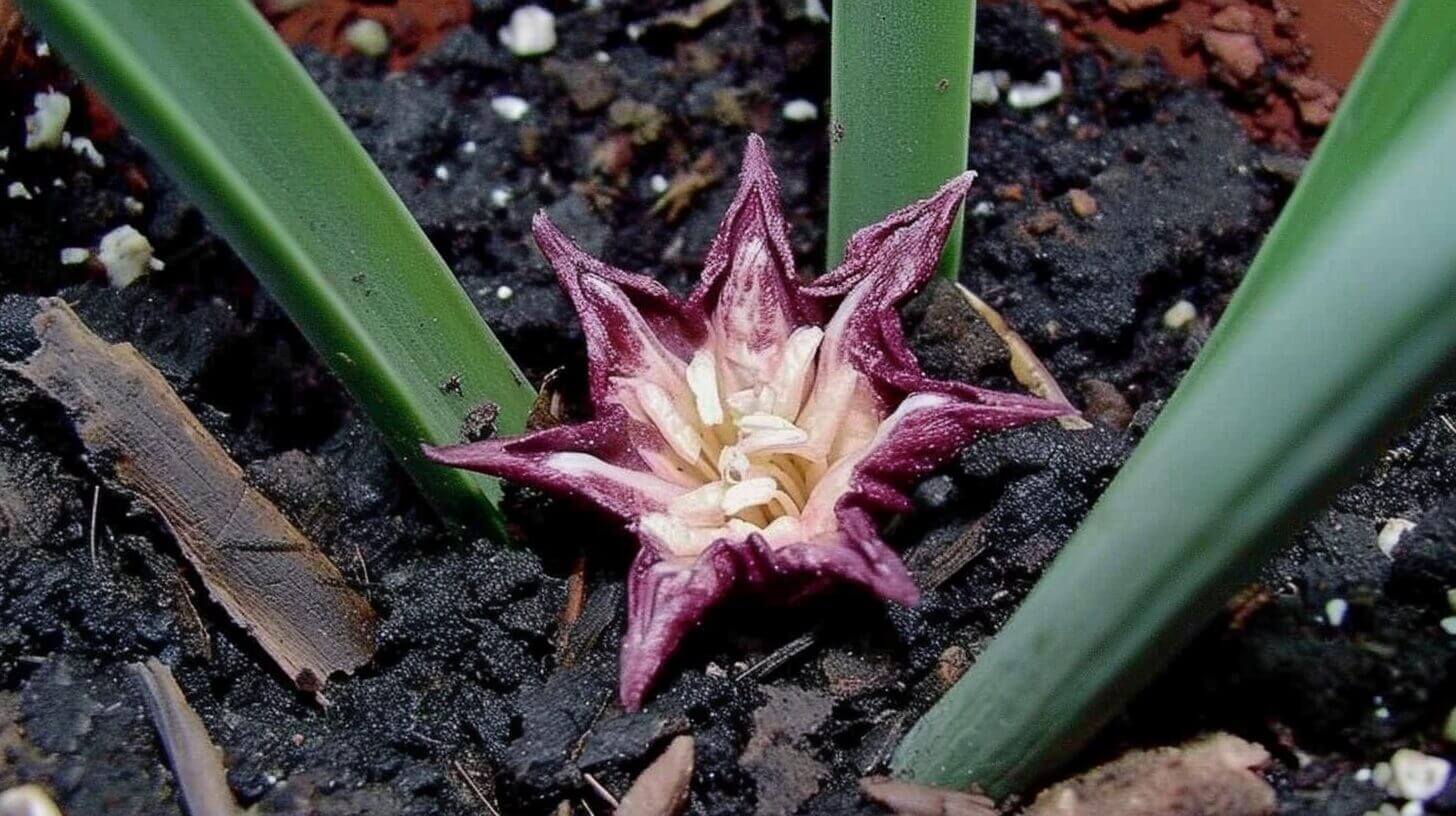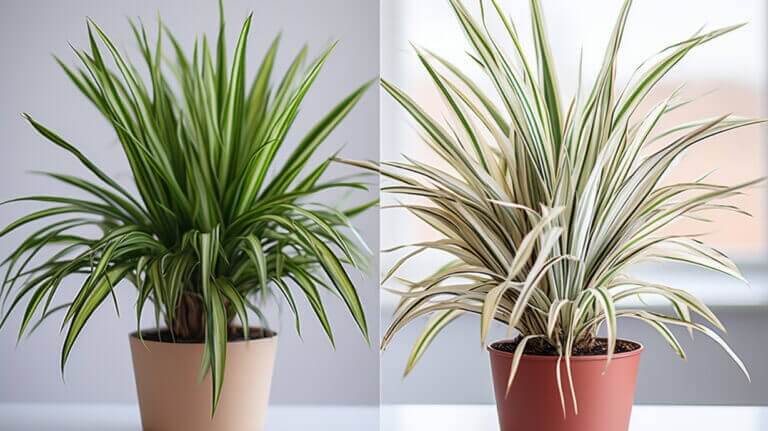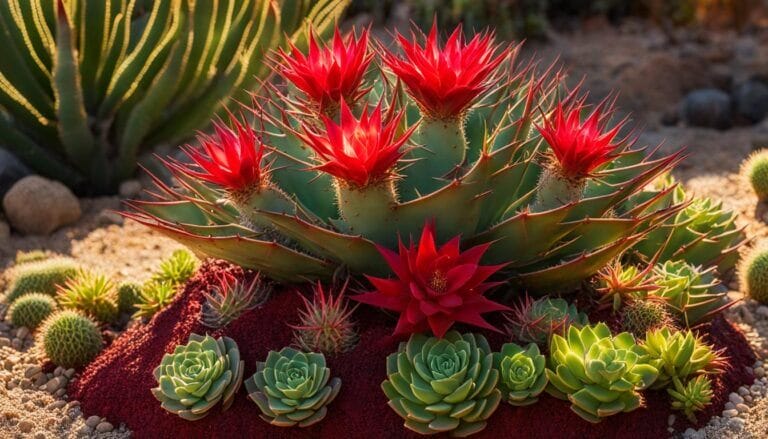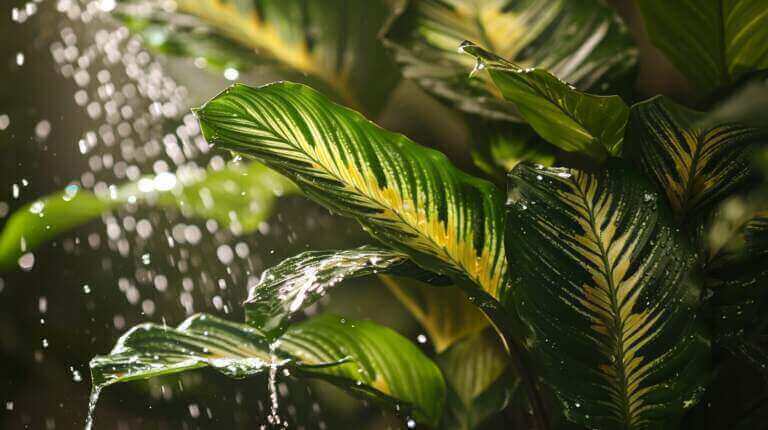Getting Gorgeous Blooms on Your Cast Iron Plant(Aspidistra Elatior): Tips to Trigger Flowers
The cast-iron plant, also known as Aspidistra elatior, is an easy-to-care-for indoor houseplant that is known for its resilience and ability to thrive in low-light conditions. It has arching, lance-shaped, deep green, glossy leaves that can reach up to 2 feet long and 4 inches wide. While the plant typically does not produce significant flowers when grown indoors, it can occasionally produce cream and purple blossoms when planted outdoors in the spring. To trigger flowers and achieve gorgeous blooms on your cast iron plant, you can follow these tips:
Key Takeaways:
- Provide the right light conditions
- Avoid overwatering and direct sunlight
- Use well-draining soil
- Maintain appropriate temperatures and humidity levels
- Fertilize regularly
- Choose the right cast iron plant variety
- Propagate through division
Environmental Factors for Cast-Iron Plant Bloom Triggering
Importance of shade for promoting flower production
One of the key factors in encouraging more blooms on your cast iron indoor plant is providing it with adequate shade. This plant thrives in low-light conditions and direct sunlight can actually hinder flower production. Placing your cast iron plant in a shady spot, such as under a tree canopy or in a north-facing window, will provide the ideal light conditions for optimal flower growth.
When it comes to shade, it’s important to strike a balance. While the cast iron plant prefers low-light conditions, it still needs some indirect light to photosynthesize and generate energy. Avoid placing it in complete darkness, as this can lead to weak and spindly growth. Aim for a spot with bright, but indirect, light for the best results.
Creating well-drained soil conditions for optimal growth
Another crucial environmental factor for triggering blooms on your cast iron plant is the quality of the soil. This plant favors rich, well-drained soil that mimics its natural habitat. Avoid soil that becomes waterlogged, as this can lead to root rot and other issues that inhibit flower production.
To create the ideal soil conditions, choose a pot with good drainage holes to prevent waterlogging. This will allow excess water to freely flow out of the soil, preventing moisture buildup around the roots. Additionally, consider amending the soil with organic matter, such as compost or peat moss, to improve its drainage capabilities.
In terms of watering, irregular watering works best for the cast iron plant. Mimic its natural drought conditions by allowing the soil to dry out slightly between waterings. Overwatering can lead to root rot and hinder flower production. Use your finger to check the moisture level in the soil before watering. If it feels dry 1-2 inches below the surface, it’s time to water.
Caring for Your Cast Iron Plant
When it comes to getting gorgeous blooms on your Cast Iron Plant, also known as Aspidistra Elatior, there are a few key factors to consider. By properly caring for your plant, you can encourage it to produce beautiful flowers that will add a touch of elegance to your space. Here are some tips to trigger flowers on your Cast Iron Plant.
Watering techniques to support healthy blooms
One of the most important aspects of caring for your Cast Iron Plant is finding the right watering technique. While this plant can withstand neglect and is known for its ability to tolerate drying out, providing consistent moisture is essential for triggering blooms.
The key is to find a balance between underwatering and overwatering. The Cast Iron Plant prefers a slightly dryer soil, so it’s important to allow the top inch or two of soil to dry out before watering again. This mimics its natural environment and encourages the plant to produce flowers.
To check the moisture level of the soil, simply insert your finger about one to two inches into the soil. If it feels dry at that depth, it’s time to water. When watering, make sure to thoroughly saturate the soil, allowing the water to reach the roots.
Fertilizer requirements and timing for encouraging flowers
Proper fertilization is another important factor in encouraging blooms on your Cast Iron Plant. While this plant is relatively low-maintenance, occasional fertilization can greatly enhance its blooming potential.
During the active growing season, which typically occurs in spring and summer, you can use a balanced, water-soluble fertilizer to provide the necessary nutrients. It’s important to follow the instructions on the fertilizer package and dilute it to the appropriate concentration. Apply the fertilizer after watering the plant to avoid burning the roots.
It’s worth noting that during the fall and winter months, fertilization is not necessary for the Cast Iron Plant. This is a time when the plant goes into a semi-dormant state, and its focus shifts from producing flowers to conserving energy.
Importance of shade for promoting flower production
Providing adequate shade is crucial for triggering blooms on your Cast Iron Plant. These plants thrive in low-light conditions and direct sunlight can actually hinder flower production. Therefore, it’s important to place your Cast Iron Plant in a shady spot, such as under a tree canopy or in a north-facing window.
While the Cast Iron Plant prefers low-light conditions, it still needs some indirect light to photosynthesize and generate energy. Avoid placing it in complete darkness, as this can lead to weak and spindly growth. Aim for a spot with bright, but indirect, light for the best results.
Creating well-drained soil conditions for optimal growth
Another crucial environmental factor for triggering blooms on your Cast Iron Plant is the quality of the soil. These plants prefer rich, well-drained soil that mimics their natural habitat. Soil that becomes waterlogged can lead to root rot and inhibit flower production.
To create the ideal soil conditions, choose a pot with good drainage holes to prevent waterlogging. This will allow excess water to freely flow out of the soil, ensuring that the roots are not sitting in water. Additionally, consider amending the soil with organic matter, such as compost or peat moss, to improve its drainage capabilities.
In terms of watering, irregular watering works best for the Cast Iron Plant. Mimic its natural drought conditions by allowing the soil to dry out slightly between waterings. Overwatering can lead to root rot and hinder flower production. Use your finger to check the moisture level in the soil before watering. If it feels dry 1-2 inches below the surface, it’s time to water.
Troubleshooting Common Aspidistra Elatior Issues
Identifying and addressing common pests or diseases that can hinder bloom formation
While the cast-iron plant is known for its resilience and ability to tolerate neglect, it is still susceptible to certain pests and diseases that can hinder bloom formation. Here are some common issues to be aware of:
- Spider mites: These tiny pests can infest the plant and suck out its sap, leading to yellowing leaves and stunted growth. To address spider mites, regularly inspect the plant for any signs of infestation, such as webbing or speckled leaves. If detected, you can try using insecticidal soap or horticultural oil to control them. It’s important to treat the plant early to prevent further damage.
- Mealybugs: Mealybugs are small, white, cotton-like insects that can infest the plant and cause damage. They feed on the plant’s sap and can lead to wilting leaves and reduced bloom production. To treat mealybugs, you can use a cotton swab dipped in rubbing alcohol to remove them manually. Additionally, spraying the plant with a mixture of water and dish soap can help control the infestation.
- Leaf spot diseases: Leaf spotting is a common issue with cast-iron plants, and it can be caused by fungal or bacterial pathogens. These diseases manifest as dark spots or browning on the leaves, which can negatively affect bloom formation. To prevent leaf spot diseases, avoid overwatering the plant and ensure proper air circulation around the leaves. If leaf spot is detected, you can prune and remove the affected leaves, and apply a fungicide if necessary.
Proper maintenance practices to ensure a thriving Cast Iron Plant
To encourage more blooms on your cast-iron plant, it’s essential to provide the proper care and maintenance. Here are some tips to ensure a thriving plant:
- Watering: While the cast-iron plant is drought-tolerant, it still requires regular watering to support bloom formation. The key is to strike a balance between underwatering and overwatering. Allow the top inch or two of soil to dry out before watering, and make sure to thoroughly saturate the soil when watering. Avoid waterlogging or letting the plant sit in water, as this can lead to root rot.
- Fertilizing: Although the cast-iron plant is relatively low-maintenance, occasional fertilization can boost its blooming potential. During the active growing season, which typically occurs in spring and summer, you can use a balanced, water-soluble fertilizer. Follow the instructions on the fertilizer package and dilute it to the appropriate concentration. Apply the fertilizer after watering to avoid burning the roots. During the fall and winter months, when the plant goes into a semi-dormant state, fertilization is not necessary.
- Shade and light: Providing the right amount of shade is crucial for encouraging bloom production in cast-iron plants. These plants thrive in low-light conditions and direct sunlight can actually hinder flower formation. Place your cast-iron plant in a shady spot, such as under a tree canopy or in a north-facing window. Aim for a spot with bright, indirect light for the best results.
- Soil drainage: Proper soil drainage is vital for the health of your cast-iron plant and its ability to produce blooms. These plants prefer well-drained soil that mimics their natural habitat. Choose a pot with good drainage holes to prevent waterlogging and allow excess water to flow out of the soil. Additionally, consider amending the soil with organic matter, such as compost or peat moss, to improve its drainage capabilities.
- Cleaning foliage: Regularly cleaning the foliage of your cast-iron plant is important to remove dust and prevent the buildup of pests. Dust can block sunlight and hinder photosynthesis, which can impact bloom production. Simply wipe the leaves with a damp cloth or sponge to keep them clean and dust-free.
FAQ
How do I trigger flowers on my cast iron plant?
To trigger flowers on your cast iron plant, you can provide the right light conditions, avoid overwatering and direct sunlight, use well-draining soil, maintain appropriate temperatures and humidity levels, fertilize regularly, choose the right cast iron plant variety, and propagate through division.
What are the light and temperature requirements for cast iron plants?
Cast iron plants prefer indirect sunlight and should be placed in a north-facing window or in a shady area outdoors. They can tolerate some direct sunlight, but excessive exposure can lead to leaf scorching. Cast iron plants prefer temperatures between 60 and 75 degrees Fahrenheit, both indoors and outdoors.
How often should I water my cast iron plant and what kind of soil does it need?
Cast iron plants prefer well-draining soil and should be watered only when the top inch of soil feels dry. They can tolerate irregular watering and periods of drought. It is important to avoid overwatering to prevent root rot. Cast iron plants can grow in sandy, loamy, and clay soils, as long as they are well-draining.
How often should I fertilize and prune my cast iron plant?
Cast iron plants do not require frequent fertilization and can be fed once a month during the spring and summer months. It is important to follow the instructions on the fertilizer label and avoid over-fertilization. Pruning is primarily done to maintain the plant’s health and appearance, and any damaged or yellow leaves can be trimmed back to the main stem.
How can I propagate my cast iron plant and how do I deal with common issues?
Cast iron plants can be propagated through division, which involves separating a healthy rhizome with at least two or three leaves and planting it. They are generally resistant to pests and diseases, but can occasionally be affected by mites and scale. Rinsing the foliage can help control minor infestations, while stronger measures may be necessary for severe cases. Brown leaf tips can be caused by overwatering or excessive sunlight exposure.







